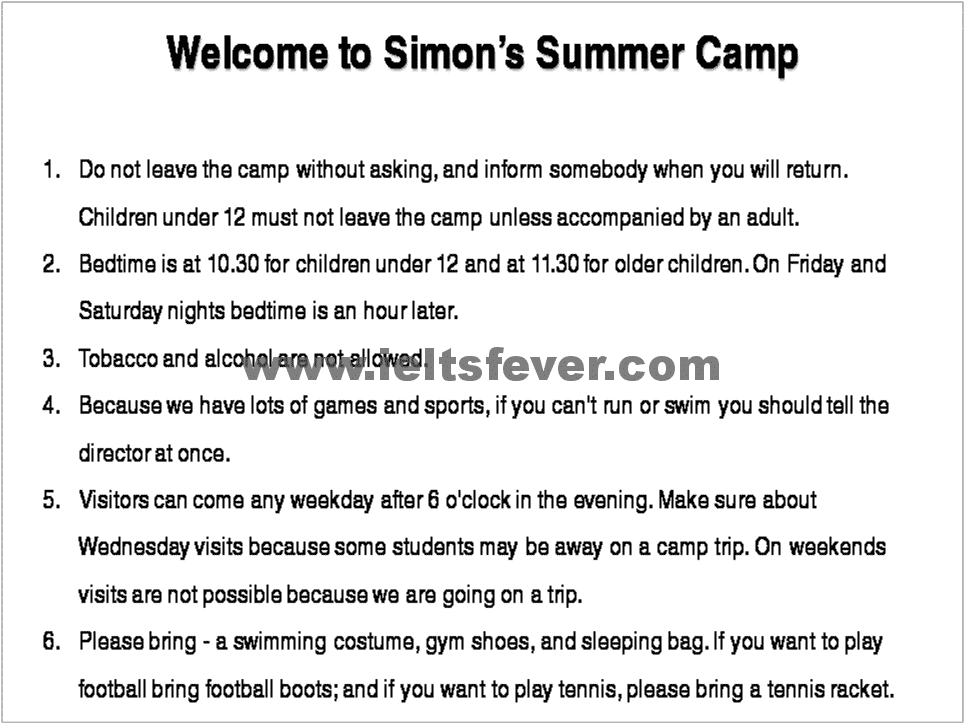IELTS Reading Tip: True/ False/ Not Given questions
Many candidates find the True/ False/ Not Given questions one of the most challenging tasks in the Reading test. In fact, the biggest problem is the ‘Not Given’ option. Most candidates are not used to having this option and it confuses them a lot. They spend too much time making sure that it is ‘not given’ and this affects the rest of their test.
Well, what does True/ False/ Not Given actually mean?
- True means that the text agrees with or confirms the information in the statement.
- False means that the text contradicts or is the opposite to the information in the statement.
- Not Given means that there is no information or it is impossible to know.
Try a True/ False/ Not Given exercise
Here’s an example. First read the text. Then answer the three questions below.
- Children under 12 cannot leave the camp without an adult.
a. True
b. False
c. Not Given - Children aged 11 go to bed at 9.30 on Friday evenings.
a. True
b. False
c. Not Given - Only parents are allowed to visit.
a. True
b. False
c. Not Given
Check your answers
When you have decided on the three answers, read on to see whether you are correct.
The answer to question 1 is True because it is stated clearly in the passage: “Children under 12 must not leave the camp unless accompanied by an adult.” The answer to the second question is False because the passage mentions that “Bedtime is at 10.30 for children under 12” and “On Friday and Saturday nights bedtime is an hour later.” The answer for question 3 is Not Given as no such information exists in the passage. It says “visitors” and does not specify what kind of visitors.
Lessons to learn
So, what are the key strategies when answering this question?
- Read the instructions and all the statements carefully. Try to understand the whole statement, and do not focus only on keywords.
- Identify any words that qualify the statement, for example some, all, mainly, often, always and occasionally. These words are there to test if you have read the whole statement because they can change the meaning.
- Don’t skim and scan the text to find the final answer. You must read the appropriate part of the text very carefully to understand what the writer means.
- Try to think of what synonyms might be in the text. This will help you identify the matching part of the text.
- The answers will be sequential with the passage. This means that the answer to the first question will come first in the passage, followed by the second question and the last one or two near the end.
- Do not spend a long time looking for the answer to one question; if you do no know the answer, put ‘Not Given’. You probably have no idea because the answer is not there.
And finally:
- Don’t assume anything based on your knowledge and experience. Read the text and find the answers there.
- Don’t overthink your answer. You could start building long, logical sequences that will lead you to the wrong answer.
Subscribe to Us On the IELTSFever YouTube channel For Tips And Tricks and Real Exam Tasks
Pages Content
Discover more from IELTS Fever
Subscribe to get the latest posts sent to your email.


1:-true ,2 :-false ,3 Not given